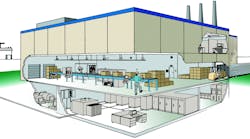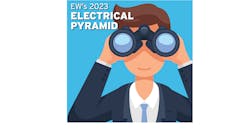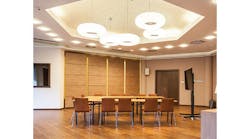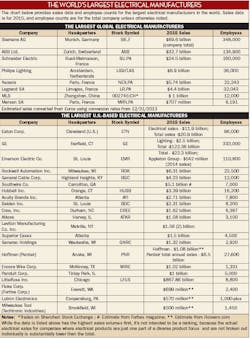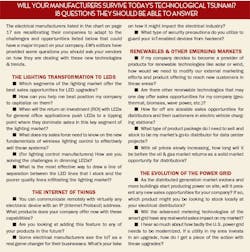As the electrical wholesaling industry’s magazine of record, Electrical Wholesaling has over the years published dozens if not hundreds of articles offering insight into mega-trends affecting electrical manufacturers. We have explored topics like globalization, ISO 9000, the Quality Process, energy conversation, e-commerce, industry consolidation and Y2K. Some of these trends, like Y2K, didn’t have quite as much impact as anticipated. But most of the other trends had a dramatic impact on how most electrical manufacturers ran their companies or created new market opportunities for them.
When EW’s editors were developing our editorial calendar for 2016, we initially envisioned that this article would focus on ranking the largest electrical manufacturers in a similar manner to what we do with the Top 200 each year. But as were researching the largest electrical manufacturers for that ranking, it quickly became apparent that the Internet of Things (IoT) and the onslaught of LED lighting systems are two game-changing megatrends now transforming electrical manufacturers of all sizes. They are driving a whole new wave of mergers and acquisitions; creating new market opportunities; redrawing the electrical industry’s boundaries and traditional channels of distribution; and introducing new products and players into the market mix. That’s not a bad thing, it’s just another sign that we live in a healthy, evolving market.
EW’s editors have written quite a few articles about the evolution of the lighting market and the new sales opportunities it presents for distributors, manufacturers and reps, but iat first we didn’t see IoT as a game-changing market opportunity because some of the early sales pitches on it were a bit heavy on the smoke and mirrors for our tastes. But over the last two years or so real-world examples of the potential of IoT-enabled devices began popping up in many places, most frequently in lighting, where applications for remote control and cloud-based data collection offer end users tangible benefits. Many of the largest electrical manufacturers, including Acuity Brands, GE, Philips Lighting, Schneider and Eaton, have been integrating IoT technology into their products over the past few years, and plenty of smaller start-ups (see the “Energy Pirates” profile on BOSS Controls, Pittsburgh, in EW’s July issue) are all over IoT, too.
In this article, EW’s editors have highlighted some of the recent developments in the worlds of the IoT and digital lighting. A related article on page 20, “Electrical Brands from A-Z,” is a resource you can use to sort out where close to 400 electrical brands have ended up after several decades of intense merger and acquisition activity.
Cisco moves into the lighting market with its Digital Ceiling concept and attracts some big-name partners from the mainstream electrical industry.
When one of the giants of the tech kingdom focuses on a product arena that accounts for 25% of more of all electrical sales through distributors, the move attracts plenty of attention. That’s what happened when Cisco, San Jose, Calif.,, a 71,822-employee tech colossus that did $49.2 billion in sales last year, rolled out its Digital Ceiling concept, which integrates the control of a building’s lighting, HVAC, security, elevators, and other systems into one digital backbone utilizing plug-and-play, Power Over Ethernet (PoE) technology instead of conventional and more expensive separate hard-wire systems. The electrical manufacturers that signed on with Cisco to market their products as part of the Digital Ceiling initiative include Cree, Innovative Lighting, Emerson Network Power, Eaton, Johnson Controls, Ellipz Lighting, Legrand, Philips and Molex. Cisco’s move to utilize the ceiling — the most valuable centralized real estate in any commercial building — is just the latest example of companies building out PoE wiring systems that can offer the latest in lighting with installation costs that can be 20% less than conventional hard-wired systems.
GE banks on a billion-dollar investment its Predix industrial software program and the Industrial Internet of Things (IIoT) to transform its business to the core.
As reported earlier this year in Electrical Marketing newsletter, GE has spent $1 billion over the last few years to develop Predix, a cloud-based software platform that has allowed GE to securely collect data from jet engines, gas turbines and MRI scanners, analyze it and then use the results to make them run better.
In a related move, GE also created its new Current by GE business unit by blending its commercial LED business with its solar, software and energy storage assets into one business unit that it says will hit $5 billion in sales five years. Current made a big acquisition in late 2015 with the purchase of Daintree Networks, Los Altos, Calif., a provider of building automation software with a core focus in commercial lighting networks.
Philips Lighting and Osram/Sylvania begin new chapters in the lighting market’s tumultuous new era.
If someone told you five years ago that two out of the three largest lighting manufacturers in the world would be spun off or sold by their parent companies, would you have believed it? But that’s what has happened during the past year, with the purchase of Osram’s Ledvance lighting unit and the coveted Sylvania lighting brand by the Chinese lighting giant MLS CO. Ltd., and the decision by Royal Philips, the parent company of the U.S.- based Philips Lighting, to spin off its lighting business in an IPO so it could focus on it HealthTech operations.
While the opportunities to upgrade traditional incandescent, fluorescent and HID lighting systems seem endless in many application niches, the commodity nature of the basic LED chips; long life of the LED lamps that tamp down replacement business opportunities; and rapid obsolescence of existing products inject some tricky pricing and inventory challenges into the new equation to run a profitable lighting business. MLS Co. Inc., Zhongshan, China, one of the 10 largest LED manufacturers in the world with over a billion dollars in annual lighting sales and more than 10,000 employees, is banking on its experience in lighting in China and the lessons it learned about the U.S. lighting market through its Forest Lighting subsidiary. It appears to be well positioned to support the Osram/Sylvania lighting business in this new era of lighting.
The Philips IPO was also one of the biggest moves the lighting market has ever seen. Royal Philips sold 37.5 million shares of Philips Lighting NV (LIGHT: Amsterdam) for a market value of 3 billion euros (US $3.3 billion), but retained a 71.25% stake that it plans to sell down over the next few years. The new Philips venture hopes to build on its 2015 revenue base of approximately $6.9 billion.
IoT and digital lighting will test electrical manufacturers but they have proven their resiliency in the past in the face of other game-changing market and economic challenges.




